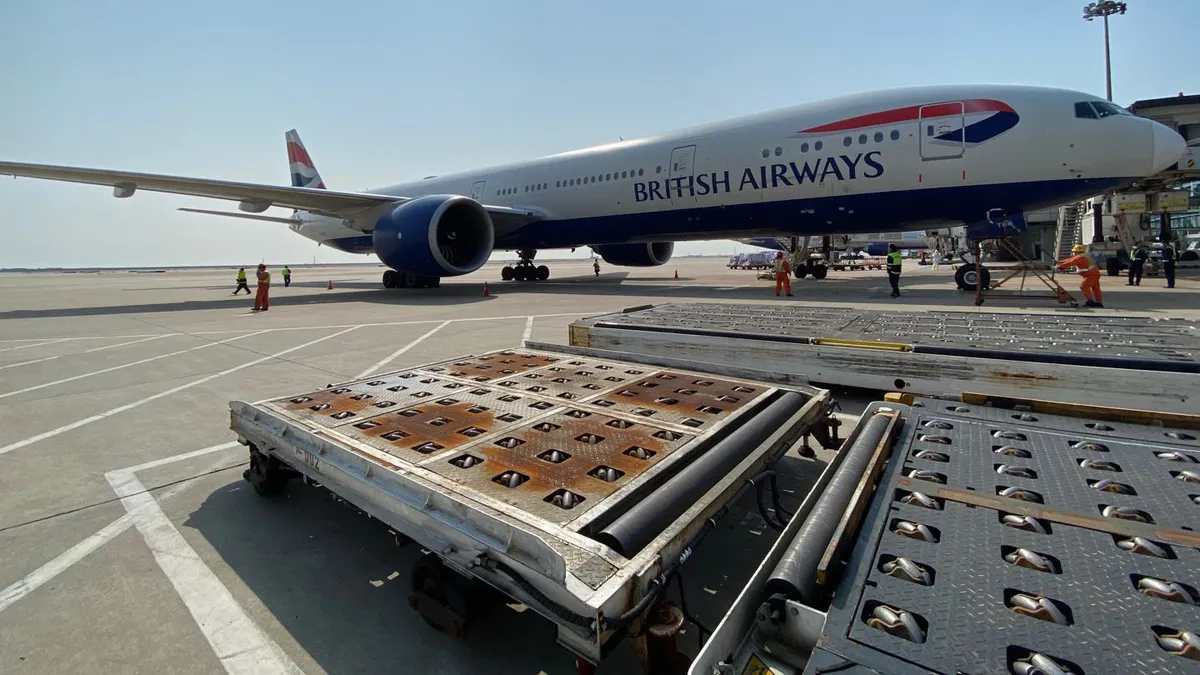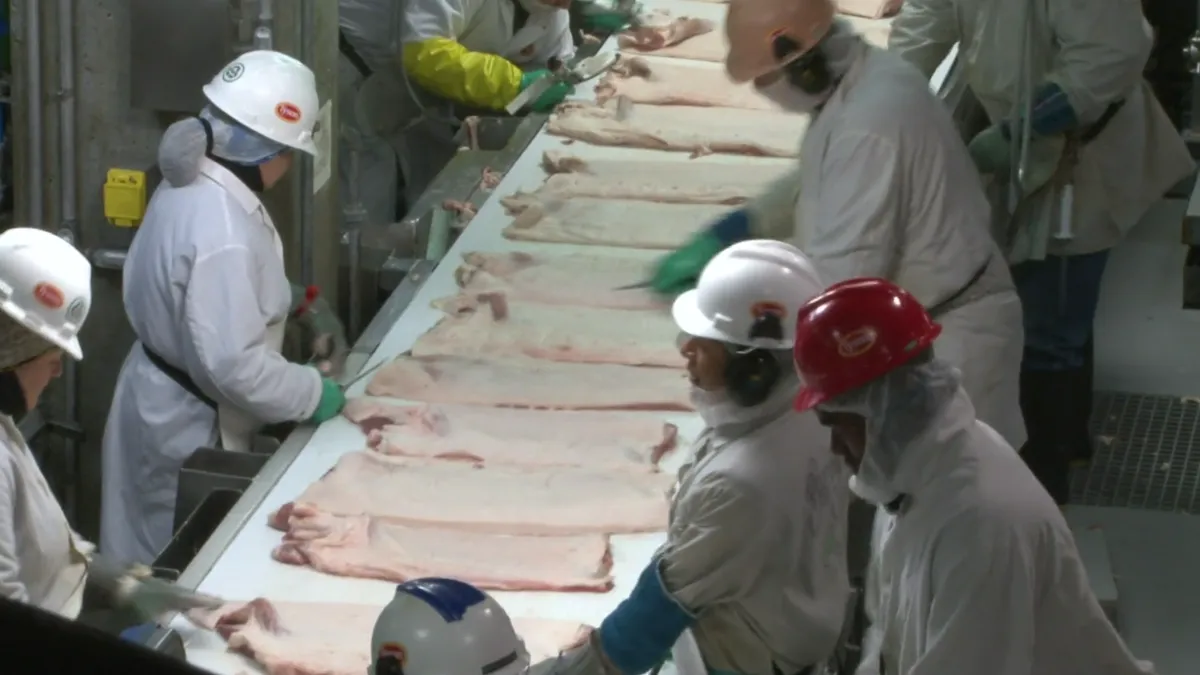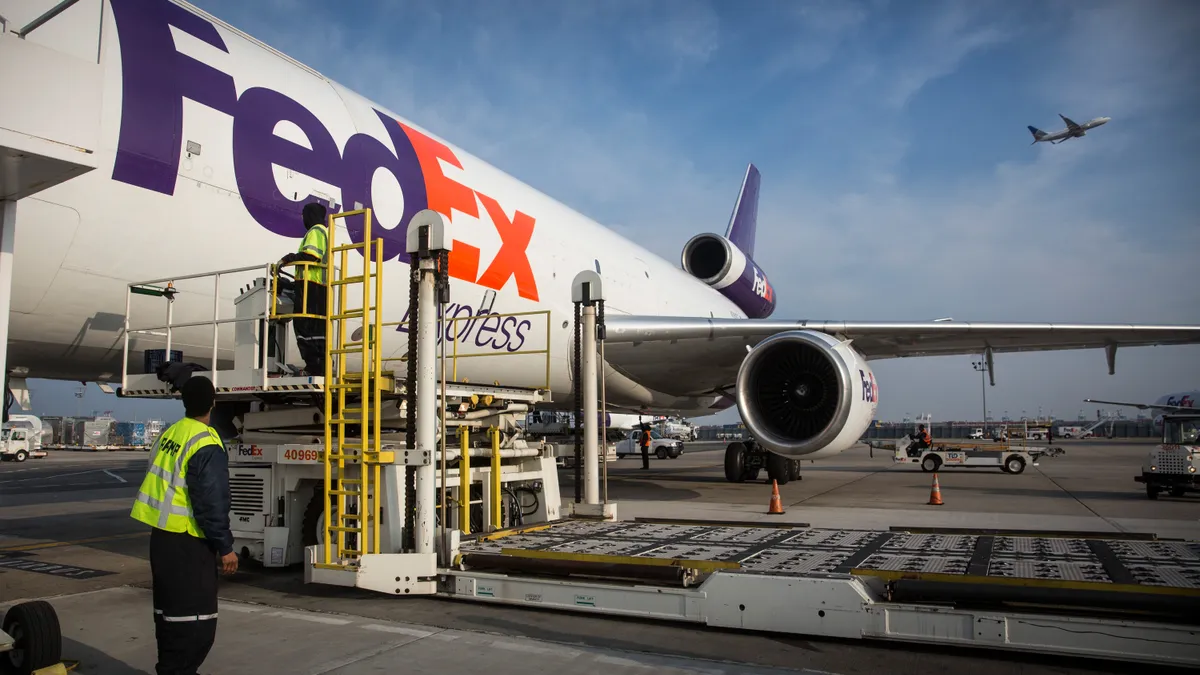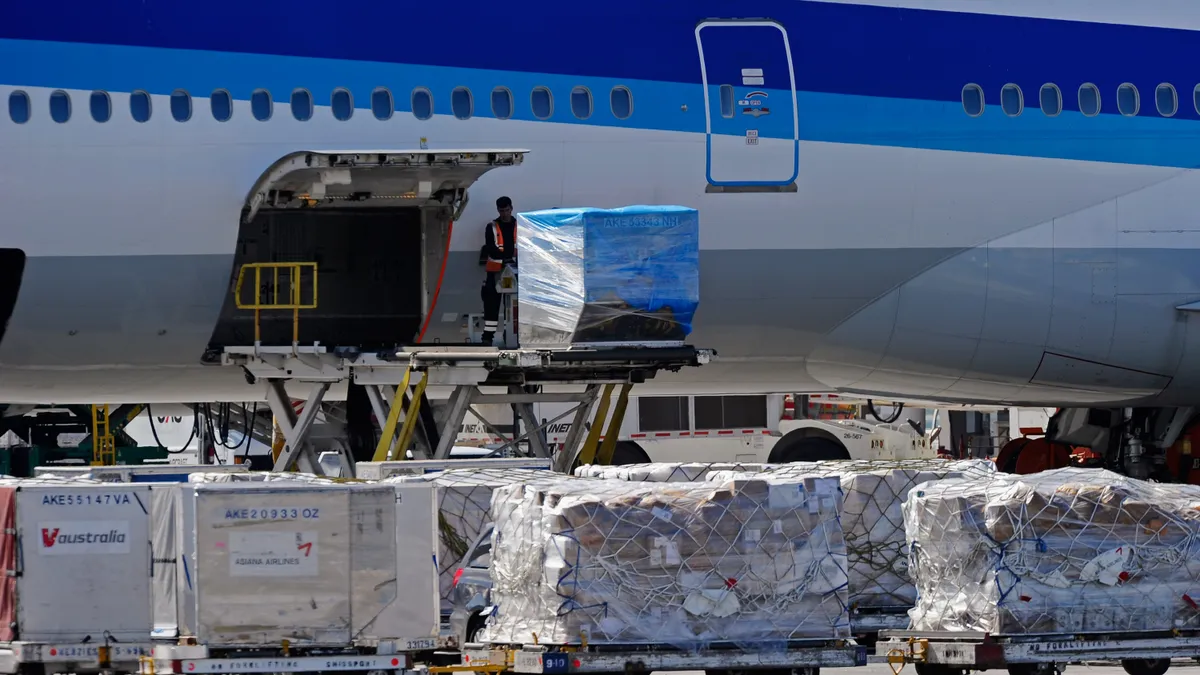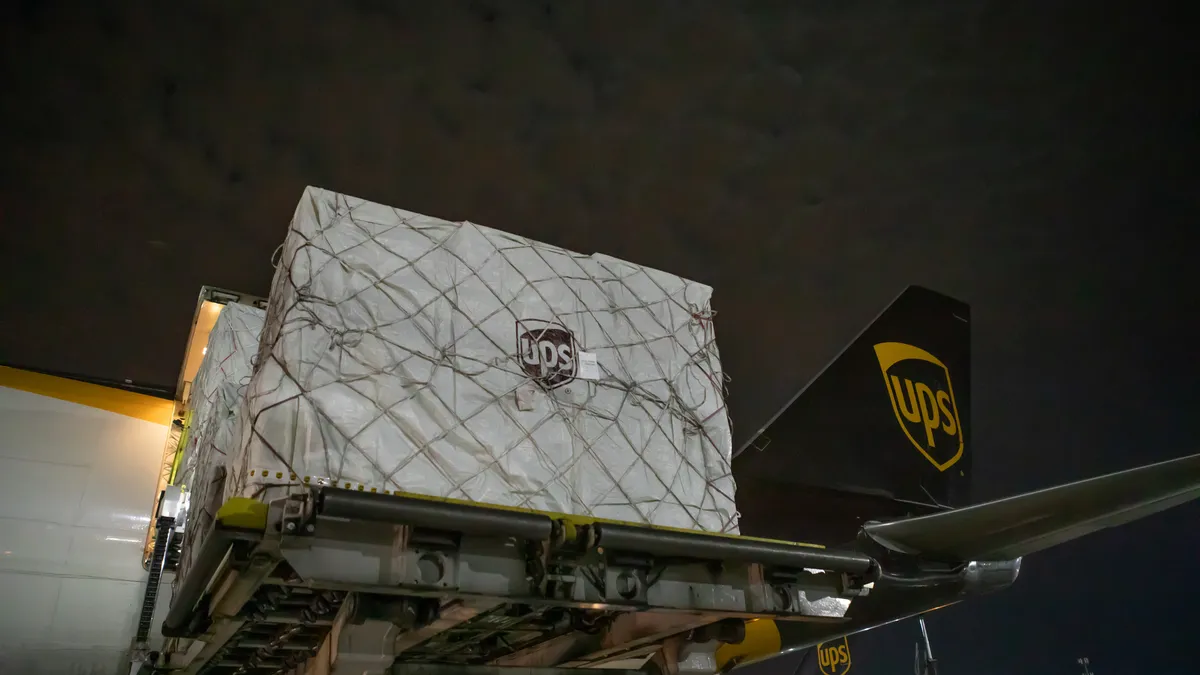Air cargo carriers are pushing customers to use electronic air waybills, which experts say are key to improving processes, increasing shipment visibility and eliminating errors.
Earlier this year, for instance, IAG Cargo implemented a charging fee for using paper AWBs as the company strives to digitize its operations and procedures.
The eAWB has been available for more than 10 years. But the air cargo industry at large has lagged in shipping document digitization, Chief Transformation Officer David Rose told Supply Chain Dive.
“Air cargo has historically relied heavily on paper processes for the contract of carriage between freight forwarders and airlines, and our customers … are likely accustomed to it,” Rose said.
The carrier hopes to achieve full eAWB adoption from its customers by the end of the year. Fewer than half of IAG Cargo’s customers currently use the digital option.
“We want to change that,” Rose said.
A more error-free, environmentally friendly option
In addition to simplifying the document handling process, eAWBs reduce the possibility of human error as shipment data gets re-processed, said Henk Mulder, head of digital cargo at the International Air Transport Association.
“The problem is [that] manual is basically very labor-intensive and error-prone,” Mulder said. “Whereas, if you have electronic data from the beginning to the end, if all goes well, it doesn’t change, and so you get less errors, less processing, and the data itself moves faster.”
Currently 85% of shipments are accompanied by an eAWB where the bills are allowed, according to Mulder. While the target has always been 100% use, the adoption of eAWBs is slowing down, despite more companies looking to digitize their processes to optimize operational efficiency and reach their sustainability goals.
The eAWB is also a more sustainable alternative to paper processes. More than 7,800 tons of paper documents are processed annually in the air cargo industry, which is the equivalent of 80 747Fs filled with paper, according to IAG Cargo’s Rose.
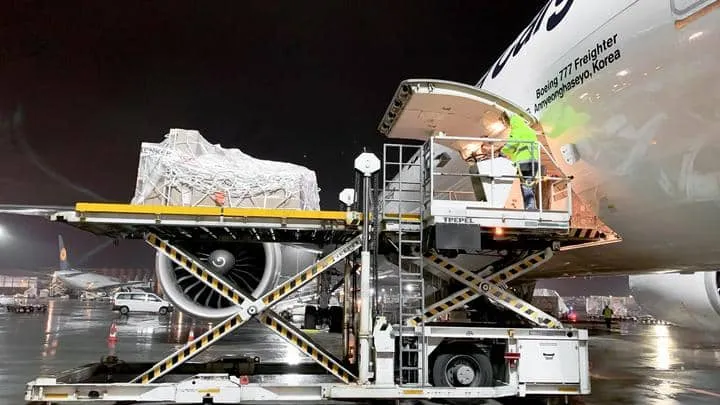
The struggles of industry adoption
Adoption of the digital document had a slow start, Mulder said.
“The technical side wasn’t the hard part [and] the willingness wasn’t the hard part, either,” Mulder said. “But just to work through the changes, I think it’s been very tough for companies. The change of paper processes to electronic processes turned out to be a lot more work than people initially thought.”
Other possible reasons for the industry's delay in adoption include a lack of confidence in the digital process and procedural hiccups, said Jan-Wilhelm Breithaupt, vice president of global fulfillment management at Lufthansa Cargo.
Lufthansa Cargo has been pushing its digital initiative for years, and implemented its “eAWB Single Process” concept in 2013 after several attempts to encourage the use of eAWBs in the early 2000s, Breithaupt said. Most of the cargo carrier’s customers already use eAWB and provide electronic AWB-data.
Regardless of incentives or initiatives, paper AWBs are still valid, despite eAWB being declared as the standard form of carriage in 2019, Breithaupt noted.
The eAWB and the path toward other digital documents
Greater digitization represents an “opportunity to achieve efficiencies and accelerate the whole airfreight process,” Breithaupt said.
He called eAWB is "a door-opener" for other paper documents that still accompany air cargo shipments.
However, as more companies leave behind outdated data messaging in favor of a new digital model, and eAWBs being used in 2 out of 3 shipments, IATA is focusing on the next step: IATA ONE Record.
ONE Record, a new standard for data sharing, creates a single record view of a shipment using a standardized and secured web API, according to IATA’s website. The goal is an “end-to-end digital logistics and transport supply chain” where data can be exchanged between air cargo stakeholders, communities and other data platforms.
“The program started a few years ago. We’re only now at a point where the standards are more or less robust enough for companies to implement,” Mulder noted.
However, IATA’s ONE Record is a more complex standard that involves many stakeholders, Mulder said. In turn, IATA is working with governments, airlines, regions and other industry players.
IATA hopes to implement the standard by January 2026, Mulder said.
“My expectation is that in the next few years, a lot of companies are going to be really pushing their capabilities in digital trading and digital business, apart from anything else,” Mulder said. “Artificial intelligence is going to force them to do that, because if they don’t, [they] fall behind the curve.”
Correction: This story has been updated to accurately reflect when eAWBs became available.



